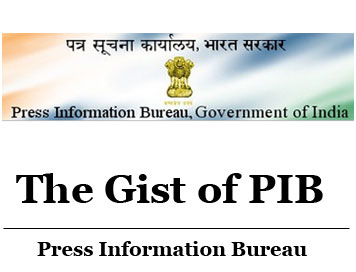(HOT) UPSC Current Affairs 2025 PDF
NEW! The Gist (NOV-2025) | E-BOOKS
(THE GIST OF PIB) First-ever census of water bodies

(THE GIST OF PIB) First-ever census of water bodies
(April-2023)
First-ever census of water bodies
- For the first time in the history of the country, the Ministry of Jal Shakti has conducted the first-ever census of water bodies across the nation.
About:
- The census provides a comprehensive inventory of India’s water resources, including natural and man-made water bodies like ponds, tanks, lakes, and more, and to collect data on the encroachment of water bodies.
- The Census also highlighted disparities between rural and urban areas and varying levels of encroachment and revealed crucial insights into the country’s water resources.
- The census was launched under the centrally sponsored scheme, “Irrigation Census” in convergence with the 6th Minor Irrigation Census in order to have a comprehensive national database of all water bodies.
- The information on all important aspects of the water bodies including their type, condition, status of encroachments, use, storage capacity, status of filling up of storage, etc was collected. It covered all the water bodies located in rural as well as urban areas that are in-use or not in-use. The census also took into account all type of uses of water bodies like irrigation, industry, pisciculture, domestic/ drinking, recreation, religious, ground water recharge etc.
The key features/findings of the Census are as follows:
- 24,24,540 water bodies have been enumerated in the country, out of which 97.1% (23,55,055) are in rural areas and only 2.9% (69,485) are in urban areas.
- Top 5 States in terms of number of water bodies are West Bengal, Uttar Pradesh, Andhra Pradesh, Odisha and Assam which constitute around 63% of the total water bodies in the country.
- Top 5 States in terms of number of water bodies in urban areas are West Bengal, Tamil Nadu, Kerala, Uttar Pradesh and Tripura, whereas in rural areas, top 5 States are West Bengal, Uttar Pradesh, Andhra Pradesh, Odisha and Assam.
- 59.5% of water bodies are ponds, followed by tanks (15.7%), reservoirs (12.1%), Water conservation schemes/percolation tanks/check dams (9.3%), lakes (0.9%) and others (2.5%).
- 55.2% of water bodies are owned by private entities whereas 44.8% of water bodies are in the domain of public ownership.
- Out of all ‘in use’ water bodies, major water bodies are reported to be used in pisciculture followed by Irrigation.
- 78% water bodies are man-made water bodies whereas 22% are natural water bodies. 1.6% (38,496) water bodies out of all the enumerated water bodies are reported to be encroached out of which 95.4% are in rural areas and remaining 4.6% in urban areas.
CLICK HERE TO DOWNLOAD FULL PDF
CLICK HERE TO DOWNLOAD UPSC E-BOOKS
Study Material for UPSC General Studies Pre Cum Mains
Get The Gist 1 Year Subscription Online
Click Here to Download More Free Sample Material
<<Go Back To Main Page
Courtesy: PIB


